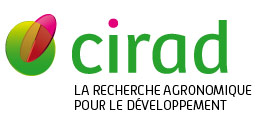Within and between bale variability of instrumental data: measurement and practical incidence on cotton trading for cotton produced in Africa
Gourlot J.P., Aboe M., Lukonge E.. 2012. In : Marquardt Friedrich (ed.). Proceedings of the 31th International Cotton Conference, Bremen, March 21-24, 2012 : competition / compatibility. Brûˆme : Faserinstitut Bremen, p. 99-121. International Cotton conference. 31, 2012-03-21/2012-03-24, Brûˆme (Allemagne).
Thanks to technical and technological developments during the last decades, the international commerce of cotton is gradually moving from the manual and visual classification to classification based on the results through instrumental testing. Change from one technique to the other requires studying their respective modalities and possibilities of application. Thus, commercial practices based on manual and visual classing agreed on the usage of an arbitration process and compromised tolerances allowing the settlement of possible litigations between sellers and buyers. It is then required to do the same for instrumental classing data, in particular in the cotton production conditions in Africa. The variability study of the fibre technological characteristics is a crucial step forward in the definition of the conditions of good realization of instrumental testing in order to limit the litigation risk between cotton producers in Africa and their international customers. It is also required to be more specific and to adapt the actual arbitral procedures to the instrumental classing. To perform the variability study, Dr. Everina LUKONGE, post-doc employee, in Eastern and South-Eastern Africa, and Modeste ABOE, PhD student, in West and Central Africa were involved. They were taking hundreds of samples from several ginning mills per region in fourteen African countries, while the same ginning mills were continuing to sample bales on the long-run during two crop seasons. All collected samples were tested in the laboratories of the respective Regional Technical Centres (RTCs) in Tanzania and in Mali. Thousands of results of samples tested by instruments were and are statistically monitored. The objective is to define operating methods for bale sampling and for testing collected cotton samples in order to warrant gained results and thus to limit the litigation risk between seller and buyer of the produced fibres. These instructions / recommendations are adding up to the ones
Mots-clûˋs : coton; fibre vûˋgûˋtale; afrique; fibre de coton
Documents associûˋs
Communication de congrû´s
